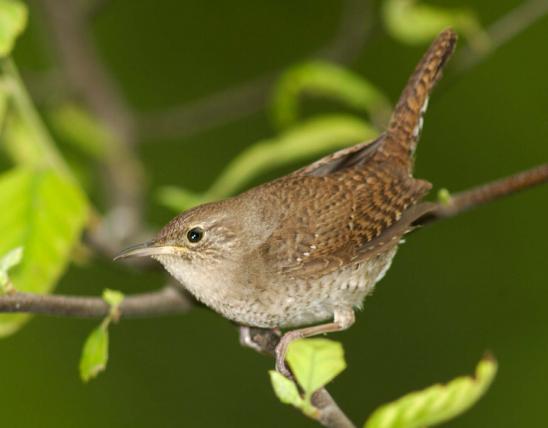
Carolina wren adult upperparts are rich reddish brown above, with a pronounced white eyebrow. Underparts are a rich, warm buff with a whitish throat. There are no white markings on the back or tail. Tail is often cocked upward. Males sing different versions, but the typical song is a loud, three-syllable phrase, "tea-kettle, tea-kettle, tea-kettle," which often sounds two-noted and is repeated a number of times. Calls include harsh, raspy sounds and a loud, descending cheeer.
Similar species: House wrens are smaller, darker, and lack the white chest and eyebrow; their lengthy, cascading, complex songs are very different. Bewick’s wren is slimmer looking, grayer and less warm-colored, with a longer tail. Songs of Kentucky warbler and northern cardinal can resemble Carolina wren’s.
Length: 5½ inches (tip of bill to tip of tail). This is rather big — for a wren.
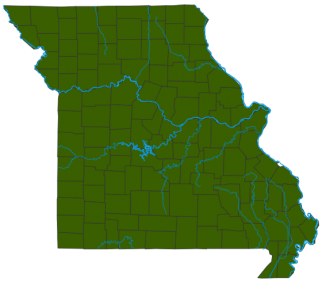
Statewide.
Habitat and Conservation
Common in understory tangles, vines, and banks where tree roots are exposed along rivers, and in forests, woodlands, and residential areas. Singing males are easily heard, but both sexes can be more difficult to see as they flit and scamper, often in pairs, around tree trunks and brushy areas hunting for insects and spiders. From their quick, scurrying movements, at first glance, you might think they were mice.
Food
The tweezerlike bills of wrens are adapted for plucking up insects and spiders. Wrens eat a variety of caterpillars, beetles, grasshoppers and crickets, true bugs, and moths. Their documented appetite for boll weevils made them welcome in the cotton-growing South. They occasionally also take small reptiles and amphibians, and they also eat small amounts of seeds and fruits, including poison ivy berries.
Status
Common permanent resident.
Life Cycle
Cup nests are of twigs and other various materials. Natural nest locations include tree hollows, cliff overhangs, and other small cavities, usually 3–6 feet high. Many nests are made in unusual locations near houses: in the ends of carpet rolls, in clothes hanging on a line, in mailboxes, in porch planters, and so on. Often, several nests are started before the pair selects one. Carolina wrens mate for life and typically forage together even after nesting is over. There are 1–3 broods a year.
Human Connections
Old Ozarkers felt that wrens were uncannily supernatural or evil. Their bite (should you ever somehow be bitten by one) was thought to be deadly poison — maybe because wrens eat so many spiders. So they left wrens alone. This was a helpful superstition, for wrens gobble up many undesirable insects!
Ecosystem Connections
Wrens are tiny, energetic predators. They and other insectivores help limit the populations of insects and spiders. Wrens, and their eggs and young, are preyed upon by a variety of other predators including snakes, raccoons, and more.


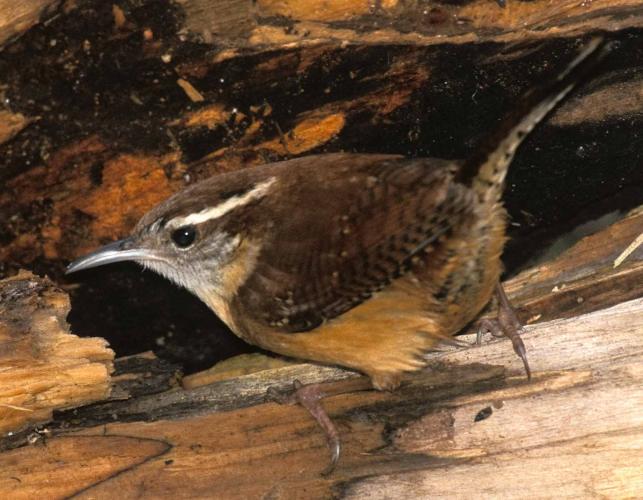
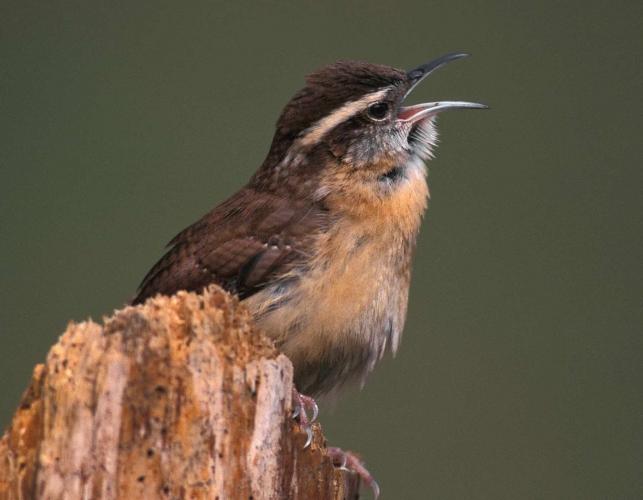





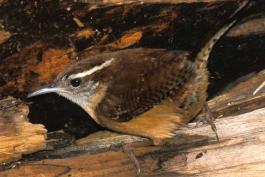

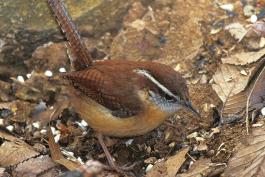

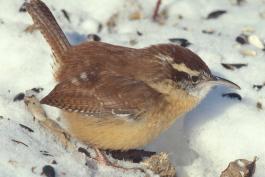
About 350 species of birds are likely to be seen in Missouri, though nearly 400 have been recorded within our borders. Most people know a bird when they see one — it has feathers, wings, and a bill. Birds are warm-blooded, and most species can fly. Many migrate hundreds or thousands of miles. Birds lay hard-shelled eggs (often in a nest), and the parents care for the young. Many communicate with songs and calls.






















